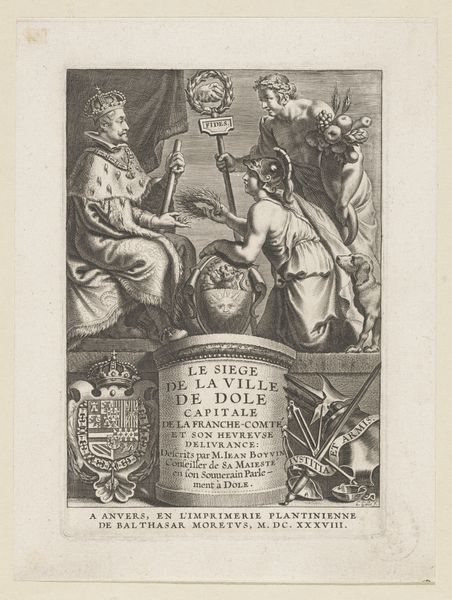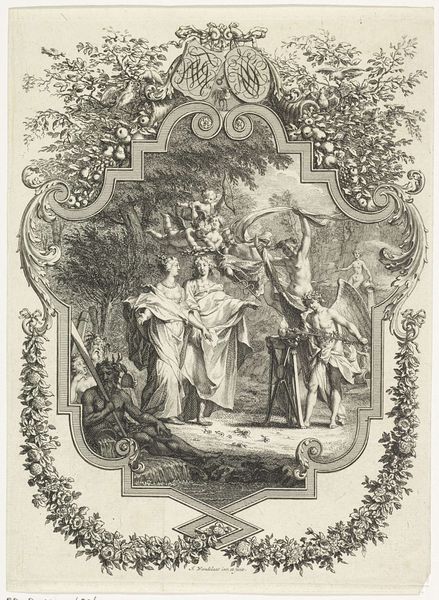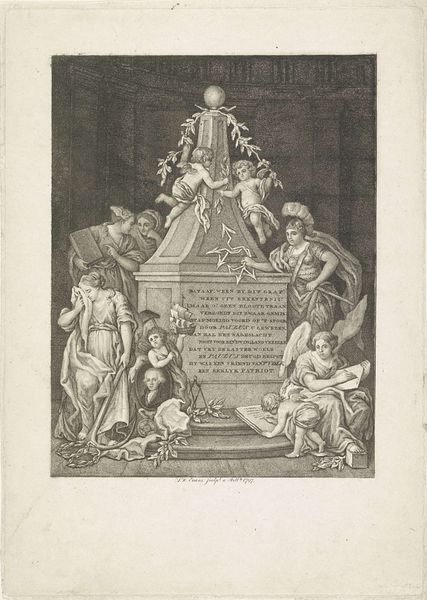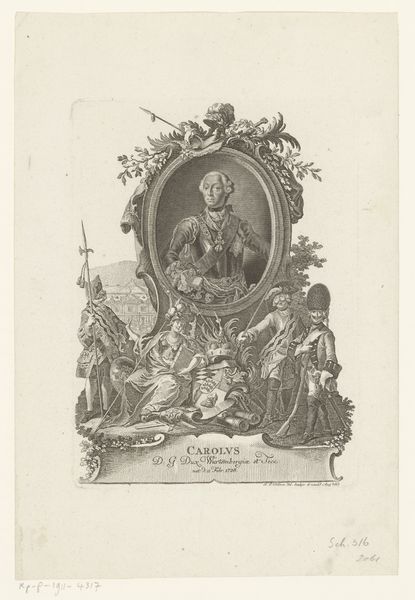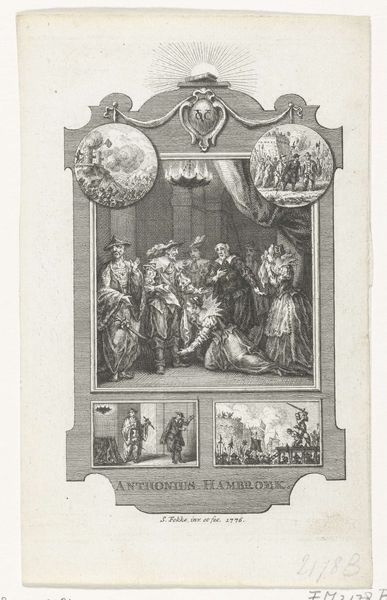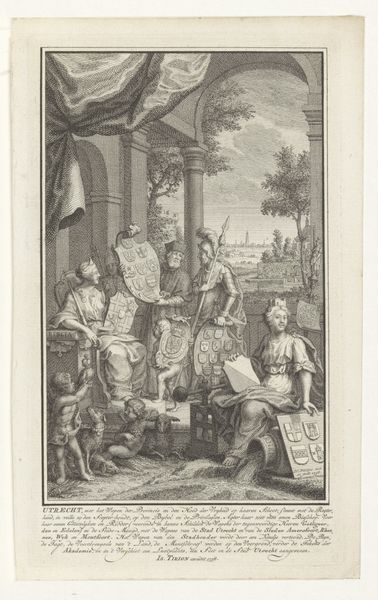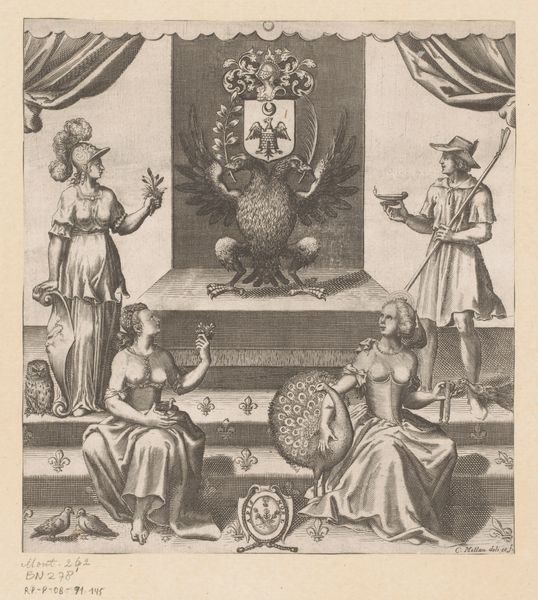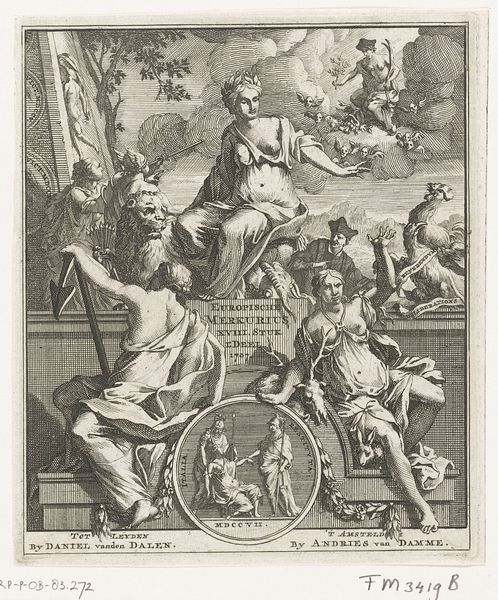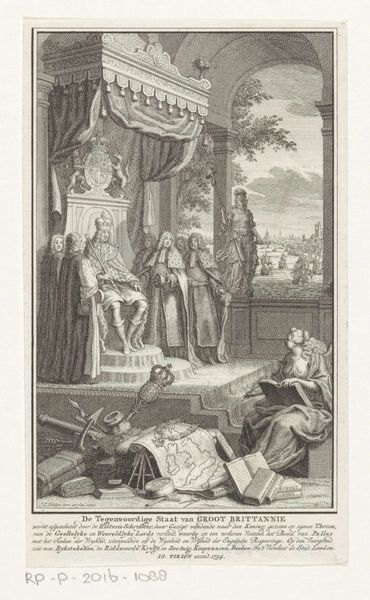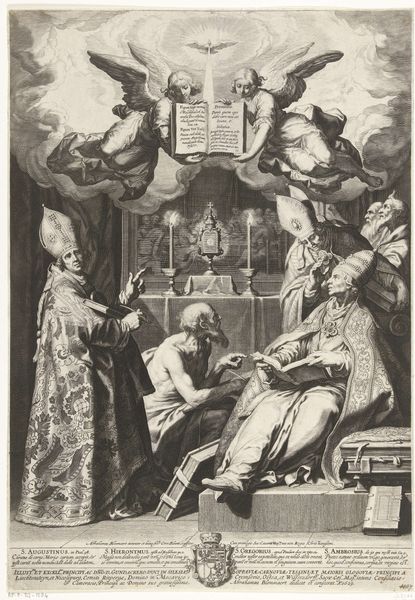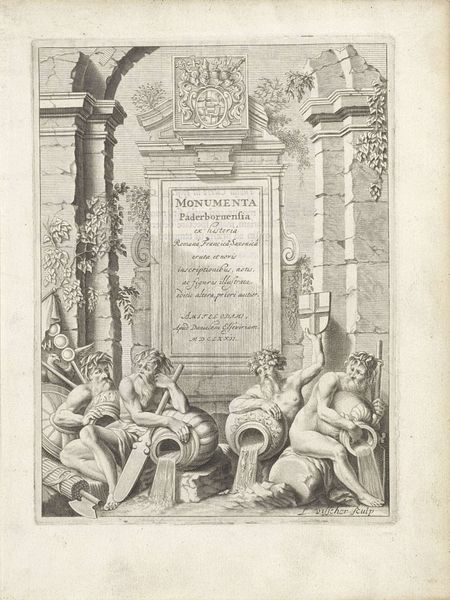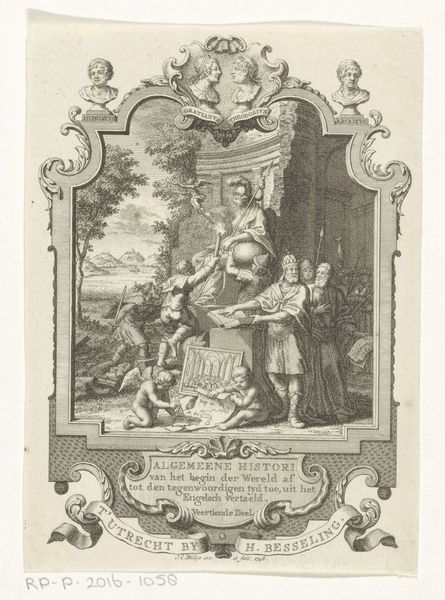
print, engraving
#
portrait
#
allegory
#
baroque
# print
#
old engraving style
#
traditional media
#
genre-painting
#
history-painting
#
engraving
Dimensions: height 128 mm, width 82 mm
Copyright: Rijks Museum: Open Domain
Editor: This is an engraving titled "Gesprek tussen Maximiliaan II Emanuel en Karel de Stoute," created around 1727-1729. It seems to depict a conversation, perhaps staged, between two historical figures, one in armor and another in more courtly attire. The presence of skulls and a ruined tower in the background lends a rather melancholic air. What can you tell me about the means of its production and historical context? Curator: Considering the social context of printmaking at the time, this engraving wasn't merely an artistic statement. It's a mass-produced object, designed for relatively wide circulation. The material—the engraved copper plate, the paper, the ink— speaks to a specific workshop, likely producing numerous prints for sale or distribution. Note how the line work defines the subjects. How might the printmaking process itself have shaped the image and its reception? Editor: So the choice of engraving as a medium influenced how it would be viewed and by whom. Are you saying the labor involved and the relatively democratic nature of print distribution shaped its cultural meaning? Curator: Precisely. Think about the accessibility of prints versus paintings. Who would typically consume such an image, and how might that impact our understanding of the allegory represented here? Also, the presence of those skulls makes me think about art’s purpose itself – is it just about displaying wealth and historical narratives, or does the piece engage with themes of labor and materiality in the 18th Century? Editor: It’s fascinating to consider this image not just for its subject, but also for its means of production and its role in broader social exchanges of that time. Viewing it as a mass-produced commodity offers a completely new perspective. Curator: Exactly, focusing on the materials and the manufacturing process really expands our understanding beyond the traditional art historical readings. It changes how we see the consumption and labor embedded within the work.
Comments
No comments
Be the first to comment and join the conversation on the ultimate creative platform.

